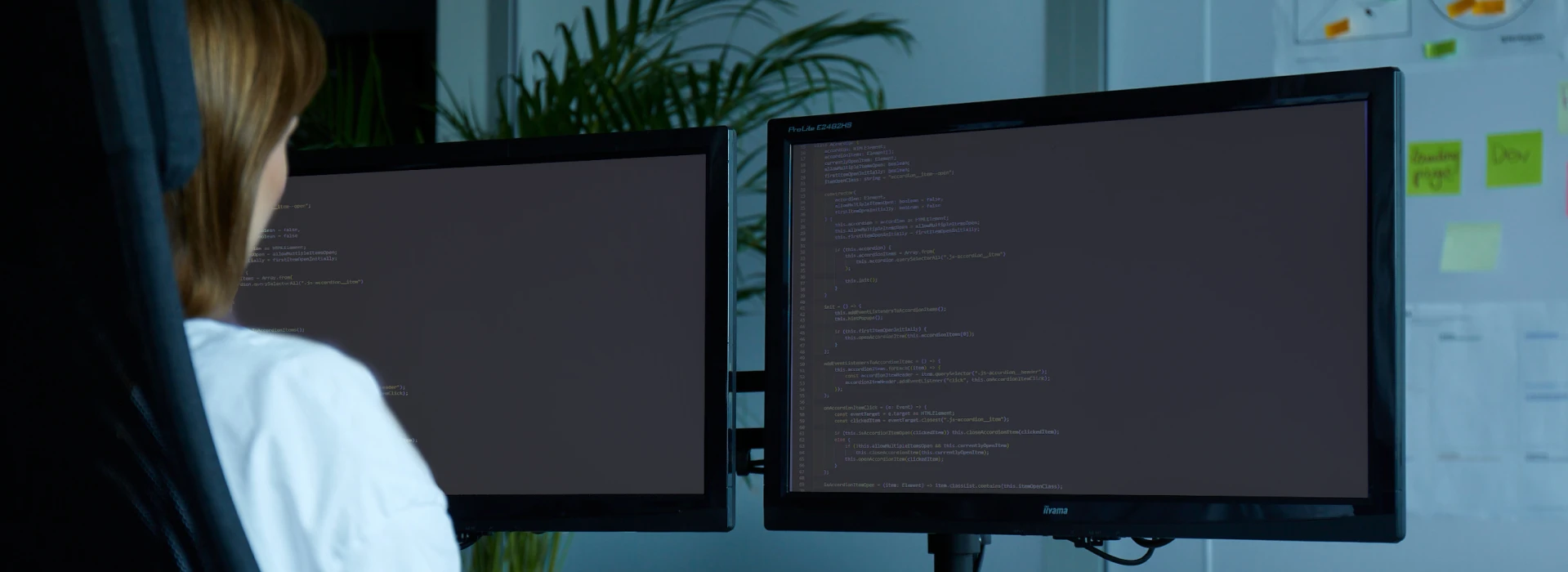COOPERATION MODELS
Flexible billing
Time&Material vs. Fixed Price
Choose a settlement method adjusted to your expectations and the nature of the app being created.

Advantages
-
A quick start
We can start work quickly without having to wait for precise assumptions and project schedules.
-
Flexibility
You can continuously monitor progress and send feedback that influences the final product.
-
MVP
You can quickly see the MVP (minimum viable product) version, for example by running a test version.
-
Priorities
You have the freedom to set a higher priority for the most important activities to the end-user so that less important solutions can be added later.
Disadvantages
-
Variable costs
No final project budget is specified. We can give you an initial estimate of the costs and time needed to complete specific tasks, but the flexibility of the project comes with a flexible budget.
-
Work schedule
A final schedule of works is difficult to determine.
-
The need for constant communication
This model requires more involvement or additional costs (due to how the product is shaped during the work - good communication is necessary, hiring a Product Owner can also prove helpful).
-
Additional administrative costs
The higher administrative costs occur due to, among other things, the need to account for the IT company's time and its continuous reporting.

GET TO KNOW MORE The Fixed Price Model
Billing in the Fixed Price model involves setting an upfront price to complete a project or part of it. Choose this option if you already know exactly what your future product should look like and how it should work. The Fixed Price model requires requirements to be clearly specified, so a detailed specification and list of business requirements and often a prototype of the application must be prepared.Advantages
-
A pre-defined budget
A predetermined budget that will not change.
-
Strict schedule
Knowing the budget and all the requirements, the schedule is predetermined, making it much easier to plan the subsequent steps.
-
Reduced communication costs
The client incurs fewer communication costs with the IT company and is not forced to control the process closely.
Disadvantages
-
Little flexibility
Fixed Price means little flexibility during the software development process: when you need a new feature, you need to recalculate the cost and change the schedule.
-
Risks
There is a risk that the project will not meet the final needs if the exact requirements are not provided or are not properly defined.
-
Revaluations
A possibility of overestimation of project costs on the part of the client or underestimation on our part.
-
The need for accurate documentation
The need to provide the IT company with strict requirements. However, it is possible to outsource the project analysis to a contractor or specialist company for a fee.
WHAT TO CHOOSE? Time & Material or Fixed Price?
01 The Budget
02 The ability to precisely define requirements
03 Flexibility
04 The scale of the project
05 The need to specify the time for the completion of works
FAQ Popular questions
-
In which types of projects will the Fixed Price model work best?
The Fixed Price model works well for projects where the amount of work can be accurately estimated. This model allows the client to specify the project budget in advance, which works well when the client’s budget is fixed or limited. -
In which types of projects will the Time & Material model work best?
The main advantage of this model is its flexibility when carrying out work. This model has been successfully applied to projects whose time consumption is difficult to estimate. Additionally, when choosing the Time & Material model, activities can start immediately without the client having to prepare concrete and complete product specification. -
Can the shape of a Fixed Price project be modified during its lifetime?
Yes, however, when deciding on this model of billing, you should remember that any modification of the shape of the product during the course of the work will involve a new valuation of the project and a change in the time of its implementation. -
I do not know which form of settlement to choose. Can you help?
The model of cooperation between the client and the IT company should be adapted to the nature of the application being developed. We can help you choose the best cooperation model for your project.
Want to know more about settling your project?
Contact us, we will answer your questions and help you choose the optimal solution.